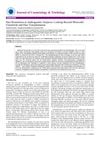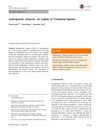Is there any hope for my hairline? Treatment 2/18/2025
The user experienced reduced hair fall with topical minoxidil and finasteride but no regrowth, and faced hormonal issues with oral finasteride. They are considering a hair transplant and exploring treatments like topical dutasteride, oral minoxidil, microneedling, and hair supplements.
View this post in the Community →
Similar Community Posts Join
6 / 1000+ resultscommunity Sept 2020 to Oct 2022. 13 months on FIN (1.25mg per day), 12 months on DUT (0.5mg per day). Age 43.
A 43-year-old user's progress pictures showing their results from taking Finasteride and Dutasteride for 13 months, along with 5% Minoxidil topical treatment for hair loss over the course of two years. Other users shared experiences and advice about using these treatments to reverse hair loss.
community Please can someone explain all the Dutasteride horror stories on here
Switching from finasteride to dutasteride for hair loss yields mixed results, with some users experiencing improvements and others facing worsening conditions or side effects like shedding. Patience is advised as dutasteride may take longer to show results, and combining treatments is suggested by some users.
community This is what Six years of DUT looks like
User had success with dutasteride for hair loss after finasteride didn't work. Some experienced increased cholesterol and debated its relation to DHT.
community Can Minoxidil & Finasteride Restore an M-Shaped Hairline
Minoxidil and finasteride can help regrow hair, especially in thinning areas, but restoring completely receded temples is challenging and may require a hair transplant. Some users report success with these treatments, particularly when combined with microneedling.
community After 4 years of this sub bringing my hair back, I think it’s time to head to 🇹🇷
The user is considering a hair transplant after 4 years of using finasteride, minoxidil, microneedling, and scalp massages for hair regrowth. Opinions differ, with some suggesting continuing current treatments and others recommending a transplant to reduce maintenance.
community [30M] My Aggressive Hair Loss Protocol – 5 Years In, Still Full Coverage
A 30-year-old man shares his successful hair loss protocol, which includes finasteride, Nizoral shampoo, low-level laser therapy, microneedling, and past use of oral minoxidil. He plans to consider dutasteride and possibly hair transplants in the future, while advising caution with crown transplants before age 35.
Related Research
6 / 1000+ results
research Androgenetic Alopecia: Therapy Update
There are many treatments for common hair loss, but more trials are needed to decide which are best.

research Hair Restoration in Androgenetic Alopecia: Looking Beyond Minoxidil, Finasteride, and Hair Transplantation
Alternative treatments show promise for hair growth beyond traditional methods.

research A Review of the Treatment of Male Pattern Hair Loss
Finasteride and minoxidil work best together for hair loss.

research Phytochemicals as Emerging Therapeutic Agents for Alopecia Treatment
Plant-based chemicals may help hair growth and prevent hair loss but need more research to compete with current treatments.

research Platelet-Rich Plasma for the Treatment of Female Pattern Hair Loss: A Patient Survey
PRP treatment satisfies 58% of female hair loss patients, with most noticing fuller, thicker hair and less shedding.

research Androgenetic Alopecia: An Update Of Treatment Options
Minoxidil is the only FDA-approved topical drug for treating male or female pattern hair loss, and other medications like finasteride and dutasteride can also increase hair growth.